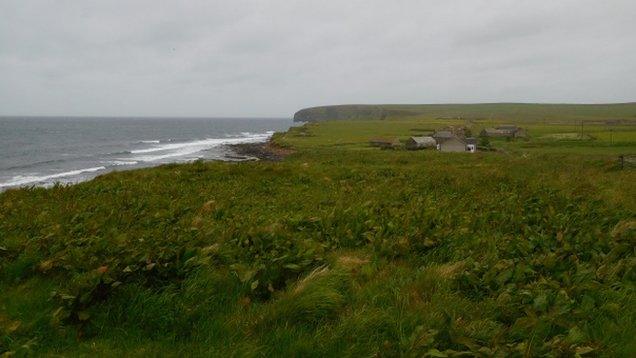Whale bone DNA gives new clues to Iron Age Orkney life
- Published
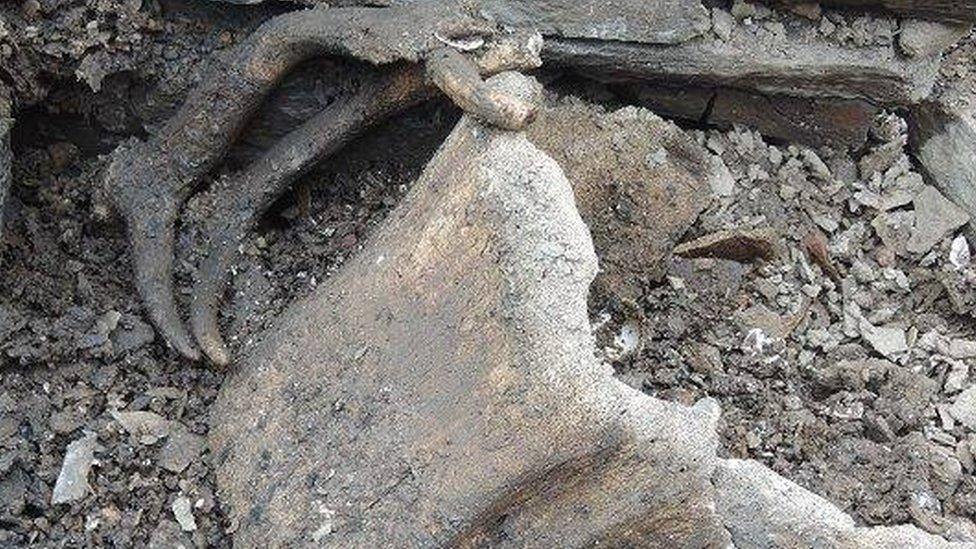
The vessel - made from a fin whale vertebra - contained a human jaw bone and two newborn lambs
When they first unearthed the container near a broch at South Ronaldsay, archaeologists knew it was a hollowed out whale vertebra.
Martin Carruthers from the UHI archaeology institute at Orkney College says "it was used as a casket, or a vessel.
"And inside of that we found a human jawbone, and two newborn lambs.
"And it was deposited we think in quite a formal manner, just outside the door of the broch at the time it was going out of use."
Even more extraordinarily two sets of antlers from red deer had been jammed into place alongside the backbone, and held in place with a quern stone.
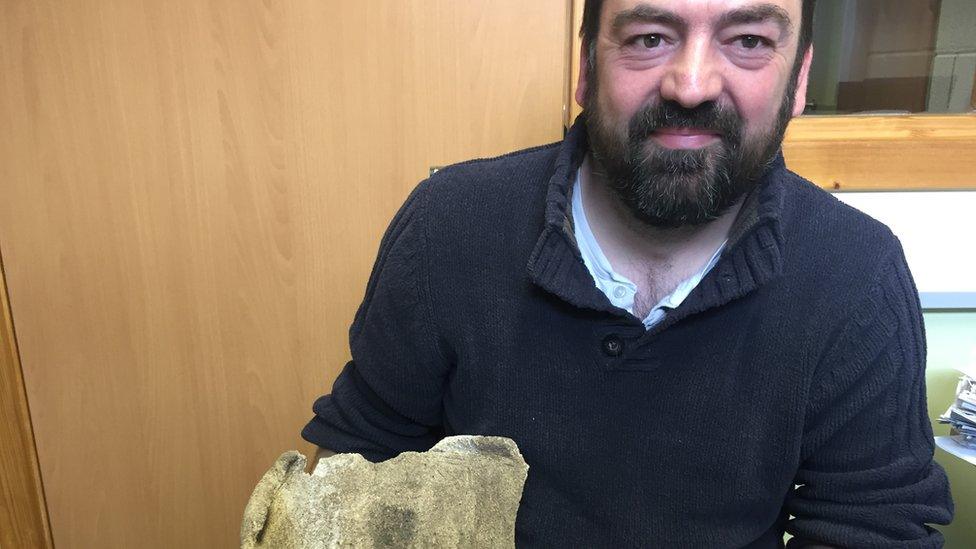
Martin Carruthers says new DNA research proves that the piece of backbone came from a giant fin whale

The vertebra casket is one of more than 100 pieces of whale bone found at The Cairns in South Ronaldsay
Now, thanks to the latest DNA testing, Mr Carruthers knows the bone came from a giant fin whale - "the second largest species of whale on the planet".
Of course, that doesn't necessarily help him understand the significance of the find, or why Iron Age people left it where they did.
But, he says, "it's amazing this object has come from a whale of that magnitude, and you've got to imagine what this must have meant for a local community, if this is beached."
He told BBC Radio Orkney there was an "active debate" among archaeologists about whether Iron Age people would have been able to hunt creatures as big as a fin whale, or if they had to rely on harvesting animals that had stranded in the shallows.
It is hoped the new investigation - involving scientists from St Mary's University Nova Scotia and Western Carolina University - might help to answer some of those questions.

Dr Brenna Frasier from Saint Mary’s University, Nova Scotia, removes a sample of whale bone for analysis
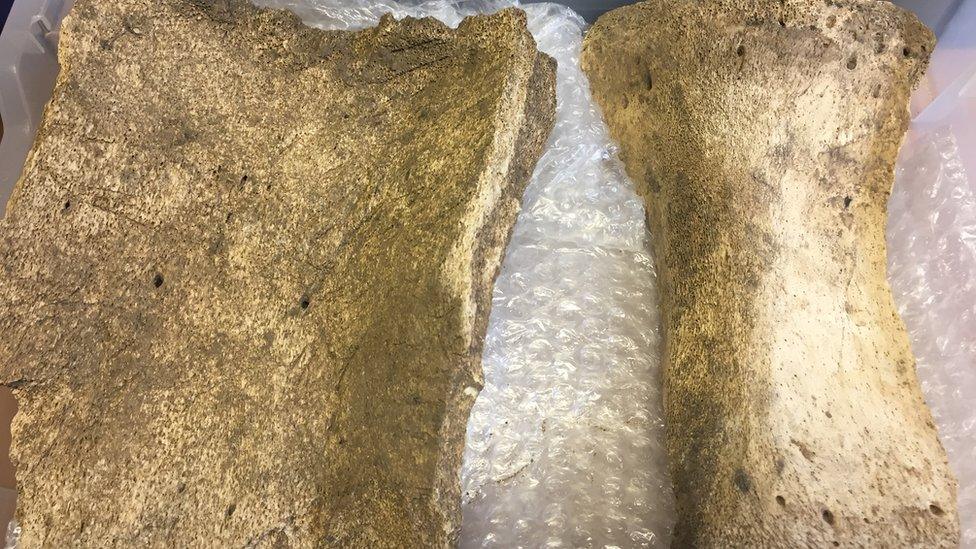
Pieces of the whale vertebra casket
They are investigating the use of whale bone in Western Atlantic society over the last 1,000 years.
And they are interested in The Cairns excavation because it has so far produced about 100 pieces of bone from whales and other, smaller, cetaceans - one of the largest collections of prehistoric whale bones in the world.
"There's sperm whale, and there appears to be minke whale", Mr Carruthers says. "There are smaller species as well: dolphin and porpoise. So there's a wide range.
"That's what you'd expect, I suppose, if you saw them as being quite opportunistic in terms of what came across their path.
"But the other thing is, there are preferences for certain types. And that may indicate that they are being a bit more discerning and picky."
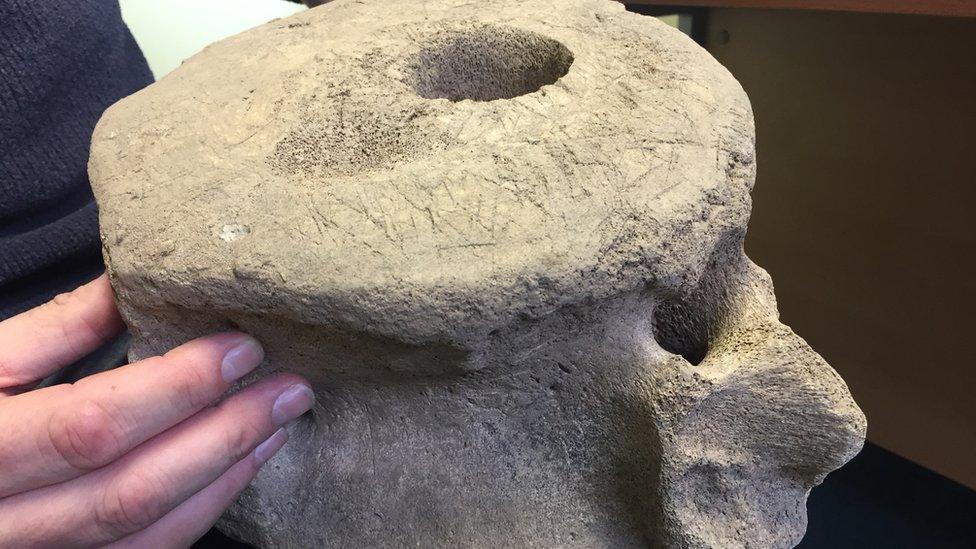
The collection also includes this whale vertebra, which has been used as a chopping block
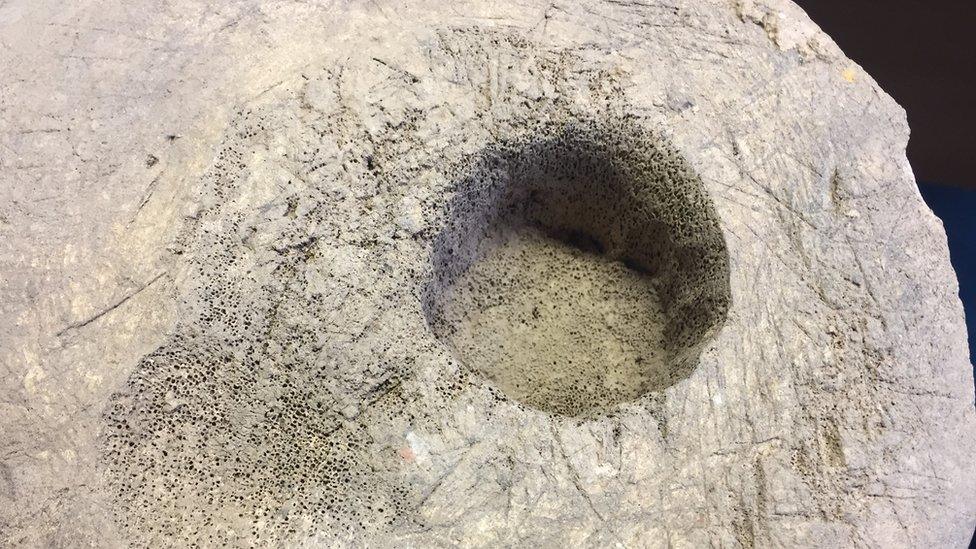
The surface of the vertebra shows multiple cut marks made with iron knives
And it is hoped there may be more insights as the investigations continue.
Mr Carruthers says: "The newest DNA techniques are managing to identify individual animals."
That means it should be possible to identify any relationships that may exist between different whales that the community at The Cairns butchered.
And even to match bones found in different parts of the dig that have come from the same animal. That opens up the possibility of being able to say precisely that different deposits must come from the same time - much more accurately than is possible with other techniques such as radio carbon dating.
"I think there's going to be a lot of really interesting stories to come out this", Mr Carruthers adds.
- Published21 November 2017
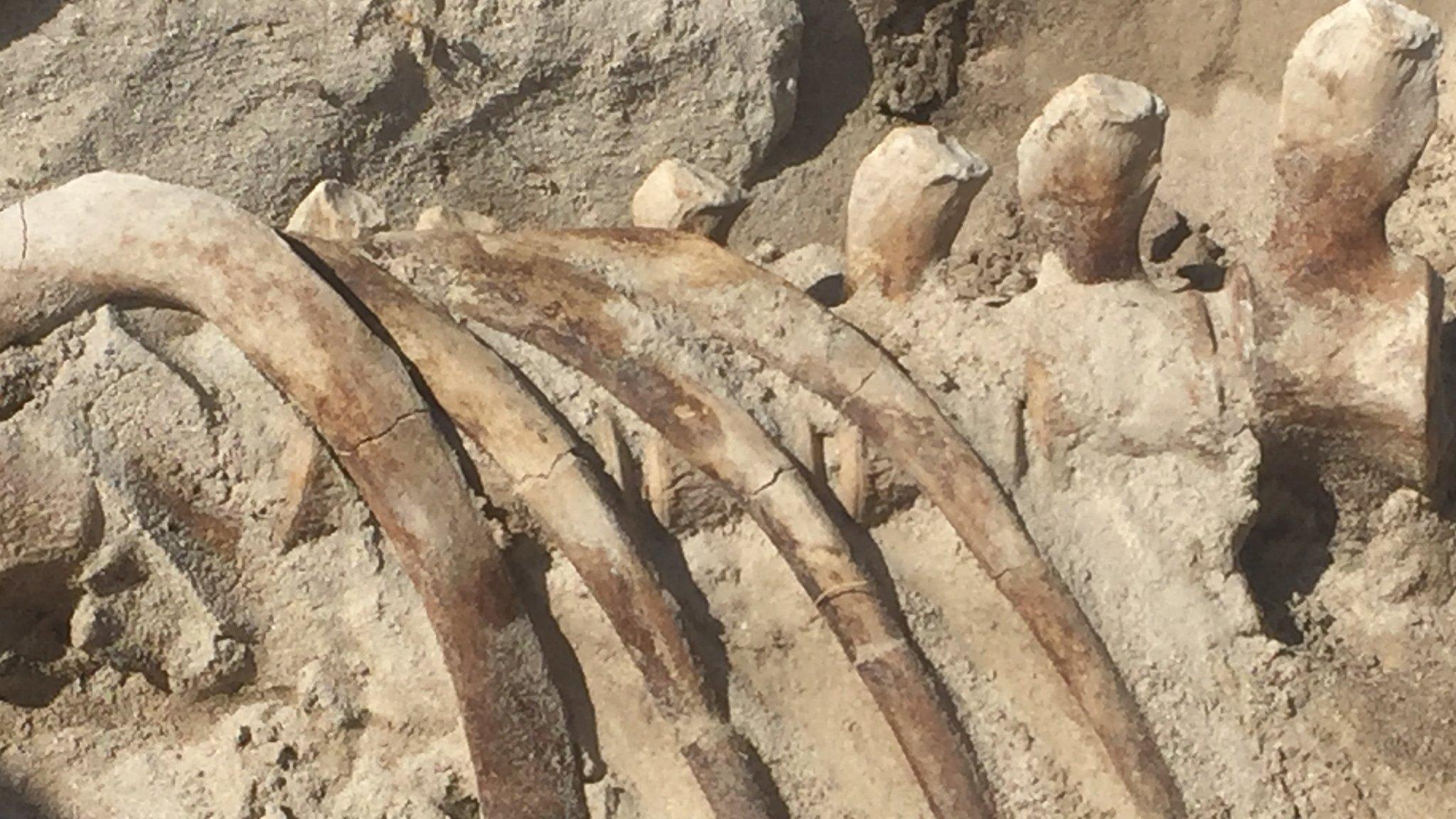
- Published27 September 2016
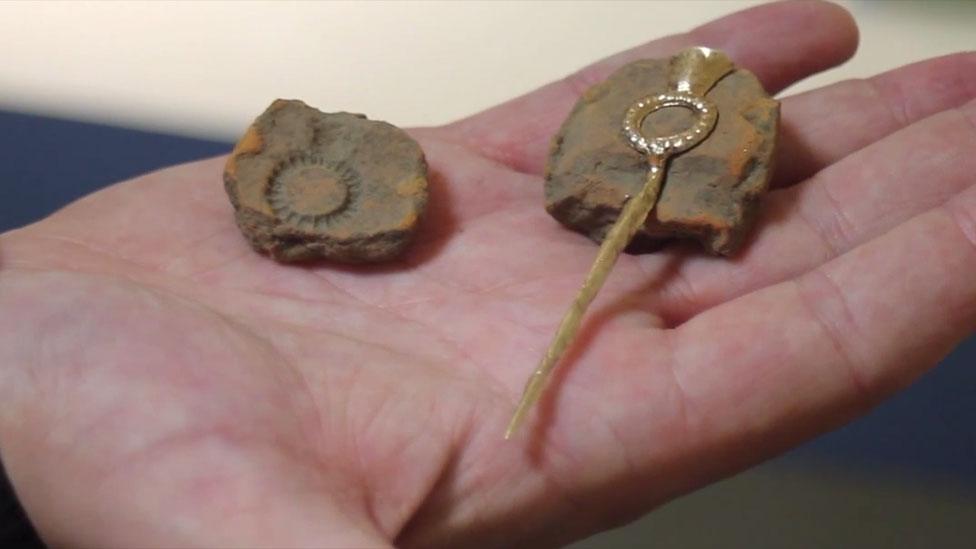
- Published6 July 2016
